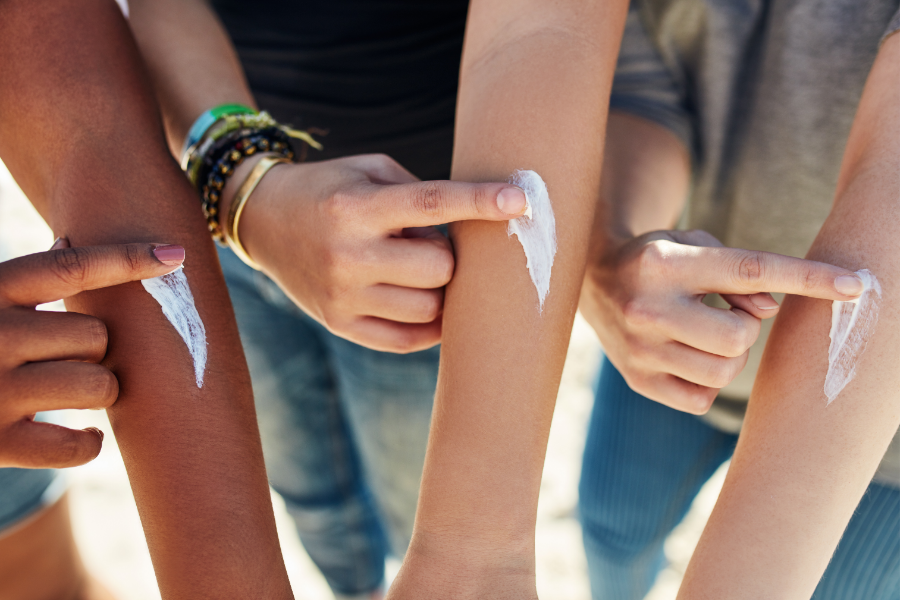
Tips to consider when shopping for effective – and environmentally-friendly – sunscreen options
Spring is here, and now is the time to find an earth-friendly sunscreen that keeps your skin protected while you enjoy the outdoors.
Whether you spend time outside every day or once in a while, you need sunscreen if you’ll be in the sun for longer than a few minutes. Skin cancer is one of the most common cancers worldwide so everyone is at risk of the adverse effects of UV radiation. The simple act of wearing sunscreen every day can reduce your chances of getting skin cancer.
Now the “fun” part – choosing the right sunscreen. There are many options to consider when shopping for sunscreen. Which chemicals should I avoid? What SPF should I buy? Here a few tips.
- Limit use of spray sunscreens when possible
While the ease of using aerosolized, or a type of spray, sunscreens is appealing, they may pose inhalation risks. They also make it too easy to not apply enough for coverage. Try to avoid using aerosol sunscreens. If you do need to use one, keep the spray away from your face and hold the nozzle close to your skin and spray generously. Use enough spray to make your skin glisten.
-
Be wary of high-SPF sunscreen
SPF, or sun protection factor, measures how well a sunscreen protects against UVB rays, the main cause of sunburn, and a contributing factor to skin cancer. A high-SPF may give you a false sense of security, and provides you with minimal, if any, additional protection. Instead, use sunscreens with SPF 30 to 50 and reapply often.
-
Choose “broad-spectrum” protection
Sunscreens with this label protect against both UVA and UVB rays. All sunscreens protect against UVB rays, which are the main cause of sunburn and skin cancer. But UVA rays also contribute to skin cancer and skin aging. Only products that pass a certain Food and Drug Administration (FDA) test can be labeled as broad spectrum.
-
Avoid sunscreen with potential, harmful chemicals
While more research is needed on chemicals used in sunscreen, some studies have shown that oxybenzone, a common chemical sunscreen ingredient, can penetrate the skin and cause allergic reactions. Other research has shown that oxybenzone contributes to coral reef bleaching. Some retailers are implementing policies against carrying products that contain oxybenzone. Before shopping for sunscreen, review research from the FDA and other sources on sunscreen chemicals. In 2019, the FDA proposed that zinc oxide and titanium dioxide are safe and effective for sunscreen use. To reduce environmental harm to the ocean, cover most of your body with ultraviolet protective factor (UPF) clothing when going in the water and apply sunscreen to just the exposed skin.
-
Know your terms: Water resistant versus waterproof
No sunscreens are “waterproof” or “sweatproof.” If a products label claims to be water resistant, it must specify how long protection lasts while swimming or sweating. Reapply sunscreen every two hours and even more often if you are swimming or sweating. In addition to these tips for purchasing sunscreen, also remember to cover up when you are in the sun and seek shade during the day when UV rays are the strongest (10 a.m. – 4 p.m.).
And for disposal of sunscreen, you can rinse the container and dispose in the garbage. If it is a full or partially-full aerosol sunscreen, you can dispose of it at the four hazardous waste disposal facilities or the traveling Wastemobile in King County. Empty aerosols can go in the garbage.